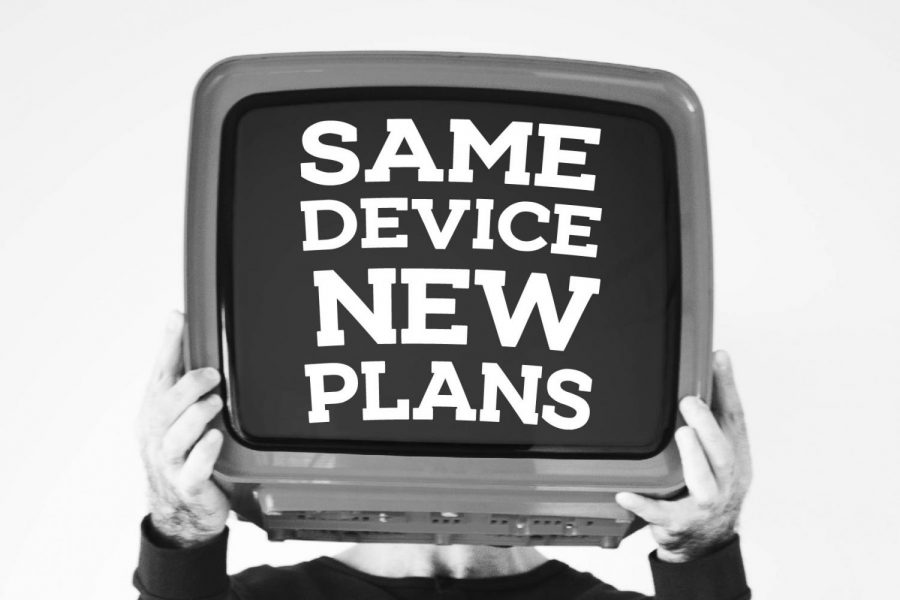Despite popular opinion, TV is not dying
February 5, 2019
With the rise of streaming and YouTube, many people assert that television is on its deathbed. That is just not true. In many ways, we are living in a golden era of television. Shows like Game of Thrones, True Detective and The Marvelous Mrs. Maisel have pushed television closer to its more respected cousin of film. Television is becoming more akin to long-form film. The growth of streaming services and the mentality of the binge have helped spur this change. Shows are not about the initial viewers at release and are more about a steady average number of streams. Television is not dying. It is evolving.
How one defines television is pertinent to the argument over its fictional death. Many see television as cable. A very cut and dry definition, but one many have. Even with this mindset, they are wrong. Cord cutting has been on the rise in recent years. While it has taken a cut out of telemarketing company’s bottom line, it is a not a sign of television’s death. Television has not changed for many years. The most significant change has been in its cost and the monopoly companies have over various regions. In our area, it is hard to have anything but Charter (or their rebranded, new name, Spectrum). Cord cutting has helped make these companies rethink their often predatory practices.
With cable declining, the use of the internet as a primary source has risen. Cable companies are now having to shift focus to providing better internet to keep up with the changing attitude of their consumer base. The past few years have seen Comcast and Verizon lose a large number of cable subscribers. They have made up that number with internet sales, according to Richard Maxwell, Ph.D., and Toby Miller, Ph.D., in Psychology Today. The shift in focus is beneficial to the consumer. Cable companies have not had a threat similar in decades.
Another argument supporting the death of television is that sales of televisions have dropped. The case is usually supported by the rise of smartphones and the rise of the home computer sales in recent years. It is a reductive and close minded argument. Watching a show on a computer or a smartphone does not hurt the medium of television. The same argument usually asserts that streaming services are also hurting television. It is another silly viewpoint. Both of these things aid television. The companies that produce shows do not care how, when or where one watches a show. They just want the ratings. With the rise of smartphones, tablets and personal computer sales, the places people can watch shows has risen exponentially. Streaming services have given people greater control over when people enjoy the shows they love. No longer is television reserved for the exact time an episode airs. It also is not resigned to happening in the living room or bedroom.
Streaming services also allow older shows and reruns of newer shows more value. These shows are no longer stuck being aired in the mornings or oddly themed marathons. It has opened a market for old shows on demand and is not limited to timeslots. Oh, television sets are also not rapidly declining in sales.
According to Maxwell and Miller in Psychology Today, while there was a downturn of five million in sales last year, the number of sales is predicted to jump by 13 million this year alone. People are opting for smart television sets or are using things like Apple TV or Amazon’s Fire Stick to supplement their television experience. Accessing television in this way will start to become the norm and not seen as a separate entity, according to Maury Brown in Forbes. So, the argument that the sales of television sets are a clear sign of the fall of the medium is totally unfounded.
Not everything is all hunky dory, though. The rise of streaming services and television through the internet brings some trouble factors. Prices for all of these will go up. It is simple supply and demand. Servers are expensive, as is licensing shows. The marketability of streaming services will also bring new contenders into the mix. Rather than having the giants of Hulu and Netflix, there will be many smaller services. The price to have a decent library of streaming will increase as more services start to exist. The oversaturation of the market will probably force a lot to cease existence or become bundled with other services, an issue even present today. With the bundling of these services, streaming will start to look more and more like cable. Consumers need to remember why they cut the cord. While it is generally good, there is potential for the evolution of television currently happening to just become cable 2.0. No one wants that.
Television is not dying. If anything, it is on the rise. While the traditional way television has been enjoyed is changing, it has not stopped television from remaining the king of entertainment. The evolution, for the most part, is a good thing. It gives viewers more autonomy on what, when and how they watch. The issue is with the future. Streaming is an enjoyable, reasonably priced and convenient way to enjoy television as a medium, but it can fall prey to the same issues that got the general public sick of cable.

